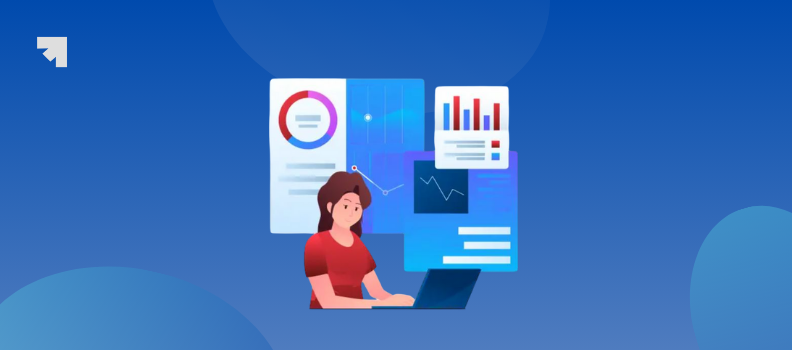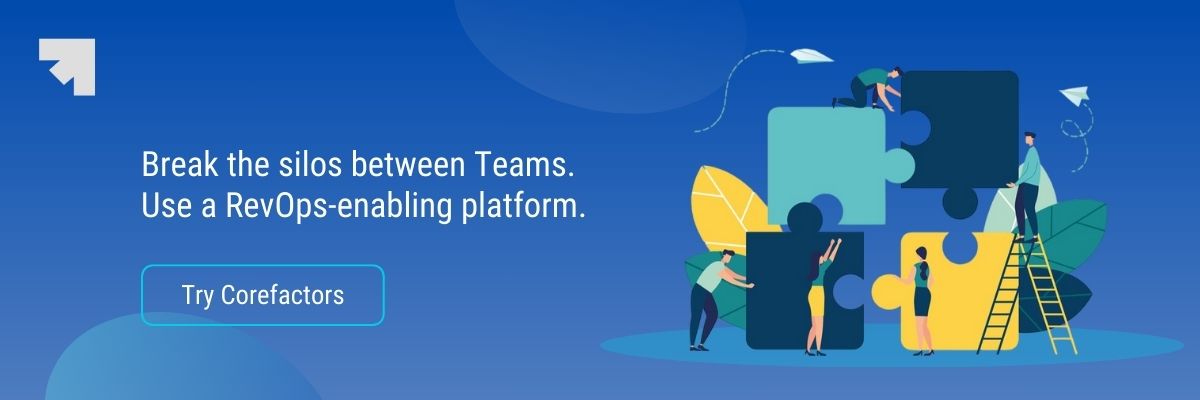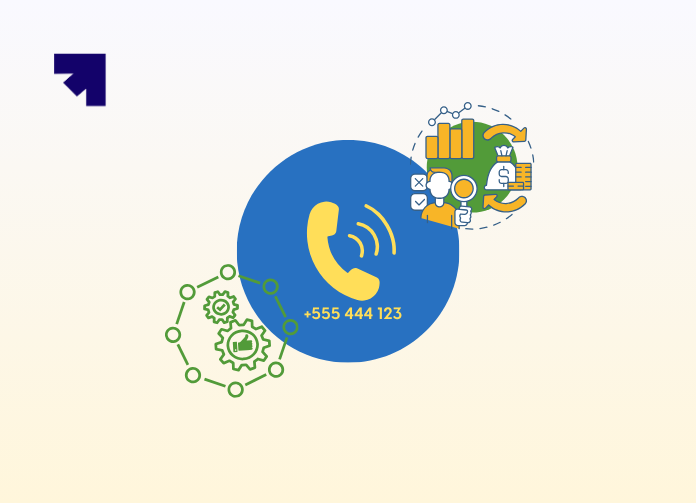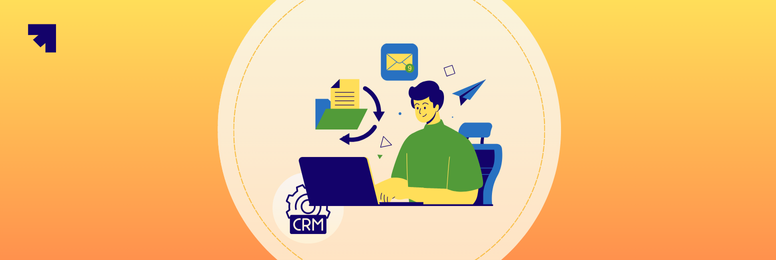8 Ways to Reduce Customer Acquisition Cost

Heading 1
Heading 2
Heading 3
Heading 4
Heading 5
Heading 6
Lorem ipsum dolor sit amet, consectetur adipiscing elit, sed do eiusmod tempor incididunt ut labore et dolore magna aliqua. Ut enim ad minim veniam, quis nostrud exercitation ullamco laboris nisi ut aliquip ex ea commodo consequat. Duis aute irure dolor in reprehenderit in voluptate velit esse cillum dolore eu fugiat nulla pariatur.
Block quote
Ordered list
- Item 1
- Item 2
- Item 3
Unordered list
- Item A
- Item B
- Item C
Bold text
Emphasis
Superscript
Subscript

8 Ways to Reduce Customer Acquisition Cost
Nagavenkateswari Suresh
Here’s a Red Flag: Growing profits may look good on paper, but if your Customer Acquisition Cost (CAC) is climbing with each new customer, your strategy might be on shaky ground.
In B2B marketing, CAC is a pivotal lever of profitability and long-term growth. If CAC continues to balloon, even while revenue ticks upward, it’s time to take a closer look.
Many companies are laser-focused on acquiring as many customers as possible but often fail to consider the true cost of bringing those customers on board. When this happens, each new customer adds less value to the business, leaving growth impact stagnant, and that’s a dangerous place to be.
The real challenge? Striking the right balance between acquisition costs and revenue impact.
An optimized CAC means that every dollar spent on acquisition drives meaningful growth.
In this blog, we’ll explore actionable strategies to reach that point of equilibrium, helping you drive revenue while keeping acquisition costs in check.
Let’s dive in.
What is Customer Acquisition Cost (CAC) and Why Does it Matter?
Customer Acquisition Cost is the total expenditure a company incurs to gain a new customer, including sales, marketing, and operational expenses. Far from being a simple line item, CAC is an indicator of how efficiently a company is growing.
Basically, it can be calculated with the formula,
CAC = Total Costs of Sales and Marketing / Number of New Customers Acquired
When left unchecked, a high CAC can eat into your margins and stunt business growth. In B2B industries, where sales cycles are lengthy and involve multiple decision-makers, CAC is inherently higher than in the B2C world. This makes it all the more essential for B2B companies to optimize their CAC if they want to stay competitive.
The Impact of Ignoring CAC Optimization
Ignoring CAC can lead to several costly consequences
- Cash Flow Strain: High CAC means less available cash for critical operations, limiting a business’s ability to scale or weather financial downturns.
- Reduced Profit Margins: If the cost to acquire customers is high, it leaves a smaller margin between CAC and Customer Lifetime Value (CLV), shrinking profit potential.
- Difficulty in Scaling: As CAC rises, the resources required to bring on new customers increase, putting pressure on your business model and slowing growth.
- Investor Reluctance: A high CAC is a red flag for investors, who want to see evidence of sustainable growth. Demonstrating that you can control and reduce customer acquisition costs will instill confidence and attract investment.
Key Metrics to Monitor for Reducing CAC
This table focuses on specific metrics that businesses should track to optimize their Customer Acquisition Cost.
How to Reduce Customer Acquisition Cost in B2B Markets?
The points below outline different methods and strategies to reduce CAC for the B2B market space.
1. Target High-Value Customers Through Focused Marketing
Pursuing the wrong customers can be costly. Begin by understanding the Lifetime Value (LTV) of different customer segments and focus on those with the highest potential returns. By aligning your marketing efforts with high-value prospects, you not only reduce customer acquisition cost but also maximize the ROI of your sales and marketing activities.
- Data-driven Targeting: Use AI-powered analytics to identify and prioritize leads based on their fit and likelihood to convert. This reduces wasted spend and optimizes the lead funnel.
- Account-Based Marketing (ABM): ABM tailors marketing strategies to specific high-value accounts inclined toward your business. By focusing on personalized campaigns for key decision-makers, you can achieve better engagement rates and shorter sales cycles too.
2. Leverage Data-Driven Retargeting Strategies
In B2B markets, prospects rarely convert after a single interaction. Retargeting allows you to stay on their radar by serving personalized ads based on their past interactions with your website or content.
- Platform-Specific Retargeting: Tailor your retargeting efforts to the platform where your potential customers spend time. LinkedIn, for instance, is ideal for B2B retargeting, given its focus on professional audiences.
- Intent Data: Analyze which content or web pages visitors are engaging with to tailor retargeting ads relevant to their interests. This can significantly improve ad performance and aid in reducing customer acquisition cost
3. Optimize Sales and Marketing Alignment
Marketing and sales alignment is vital for an efficient customer acquisition process. In B2B environments, misalignment between these teams can lead to high CAC due to duplicate efforts, inconsistent messaging, and inefficient handovers.
- Shared Metrics and KPIs: Establish joint metrics that reflect the entire customer journey, such as lead-to-customer conversion rates and Customer Acquisition Costs.
- Automated Lead Scoring: Use technology to prioritize leads based on their likelihood to convert, ensuring that sales teams focus on the most promising opportunities.
- Closed-Loop Reporting: Track and report on what happens to leads after they enter the sales pipeline. By gathering insights into what works, you can refine your messaging and processes over time.
Also Read: Lead Scoring 101: How To Leverage Data For Finding Qualified Leads?

4. Use Content Marketing to Drive Organic Lead Generation
Content marketing is a powerful tool in the B2B sector, enabling you to engage potential customers while establishing industry authority. Well-crafted content draws in qualified leads, nurtures them, and supports a shortened sales cycle.
- Evergreen Content & SEO: Create educational resources that remain relevant over time, such as whitepapers, how-to guides, and industry reports. Content optimized for search engines increases visibility, reduces dependency on paid advertising, and attracts qualified leads at a lower cost.
- Webinars and Podcasts: By creating valuable content that speaks directly to the needs of your target audience, you can reach a wider audience, build trust, and capture interest.
- Interactive Content: In today’s digital world, prospects expect more engagement. Use interactive tools like ROI calculators or quizzes to keep potential leads engaged and connected to your brand.
5. Invest in Referral Programs to Harness Customer Advocacy
A satisfied customer can be your best salesperson.
By implementing a referral program, you can reduce customer acquisition cost while boosting credibility and trust. Here’s how to make it work.
- Customer Incentives: Encourage existing customers to refer your services by offering discounts, credits, or other perks. A well-structured referral program can yield a steady flow of high-quality leads at a fraction of the cost of traditional acquisition methods.
- B2B Partnerships: Collaborate with complementary businesses to expand your reach. Co-host webinars, create joint content, or organize shared events to tap into each other’s networks. These partnerships not only broaden your audience but also help distribute acquisition costs, making customer growth more sustainable and cost-effective.
6. Embrace Marketing Automation to Streamline Workflows
Automation has become indispensable in B2B marketing, enabling companies to deliver consistent messaging at scale.
Marketing automation platforms (MAPs) allow you to automate repetitive tasks such as lead nurturing, email marketing, and customer segmentation and thus contribute towards reducing customer acquisition cost to an extent.

- Email Drip Campaigns: Automated email sequences deliver relevant content to leads based on their specific stage in the sales funnel. This targeted engagement keeps prospects interested and nurtures them toward conversion, minimizing the need for costly manual outreach efforts. This improves the customer acquisition efficiency (CAE) rates and conversion rates significantly.

- Data-Driven Insights: Marketing automation provides valuable analytics and reporting features that allow businesses to measure the effectiveness of their campaigns. By analyzing performance data, marketers can identify what works and optimize strategies, leading to more efficient spending on customer acquisition efforts.
7. Invest in Customer Success to Improve Retention and Referrals
In B2B, a large part of reducing customer acquisition cost is ensuring existing customers continue to engage with your brand. A solid customer success program not only helps retain customers but also increases the likelihood of referrals.
- Onboarding and Training: A smooth onboarding process reduces churn and ensures that customers derive maximum value from your solution, making them more likely to recommend you.
- Customer Health Metrics: Monitor customer engagement levels and satisfaction scores. This data can help you anticipate churn and focus resources on high-risk customers, maintaining a lower CAC by reducing customer turnover.
8. Conduct A/B Testing and Continuous Optimization
When it comes to B2B marketing, there’s no one-size-fits-all approach. Regular testing and optimization of marketing strategies are key to understanding what resonates with your audience.
- Ad Copy and Creative: Test various versions of your ad copy, landing pages, and content formats to see what drives engagement. Identify winning combinations to use across your marketing channels.
- Channel Performance Analysis: Evaluate the ROI of each marketing channel regularly. By tracking metrics such as Customer Lifetime Value (CLV) and conversion rates, you can identify and focus on the channels that deliver the most cost-effective results.
Make CAC Reduction an Ongoing Priority
Reducing customer acquisition cost isn’t a quick fix. It’s an ongoing commitment that requires a strategic, data-driven approach. And remember, the goal is not just to acquire customers, but to do so sustainably, ensuring that each customer adds value to your business.
Reducing customer acquisition cost also empowers you to reinvest in your company’s growth, future-proofing your business for whatever challenges lie ahead.
Curious to understand how you can reduce your customer acquisition cost? Let’s collaborate to craft a customized roadmap that fits your niche business needs. Together, we can turn your CAC challenges into opportunities for sustainable success.
Heading 1
Heading 2
Heading 3
Heading 4
Heading 5
Heading 6
Lorem ipsum dolor sit amet, consectetur adipiscing elit, sed do eiusmod tempor incididunt ut labore et dolore magna aliqua. Ut enim ad minim veniam, quis nostrud exercitation ullamco laboris nisi ut aliquip ex ea commodo consequat. Duis aute irure dolor in reprehenderit in voluptate velit esse cillum dolore eu fugiat nulla pariatur.
Block quote
Ordered list
- Item 1
- Item 2
- Item 3
Unordered list
- Item A
- Item B
- Item C
Bold text
Emphasis
Superscript
Subscript
Frequently Asked Questions (FAQs)
What is a good CAC ratio?


A common benchmark is to aim for a CAC of no more than one-third of the Customer Lifetime Value (CLV), indicating a sustainable business model.
What are the main factors that influence CAC?


Factors include marketing strategies, sales processes, target market, competition, and customer engagement practices.
How often should a business review its CAC?


Businesses should regularly review their CAC, ideally at least quarterly. This practice is essential for understanding trends, adjusting strategies, and ensuring that efforts to reduce customer acquisition costs align with overall business goals.
What are some effective strategies to reduce customer acquisition cost?


To reduce customer acquisition cost, consider implementing strategies such as targeting high-value customers, leveraging data-driven retargeting, optimizing alignment between sales and marketing teams, and investing in referral programs that encourage customer advocacy.




















.png)




.png)